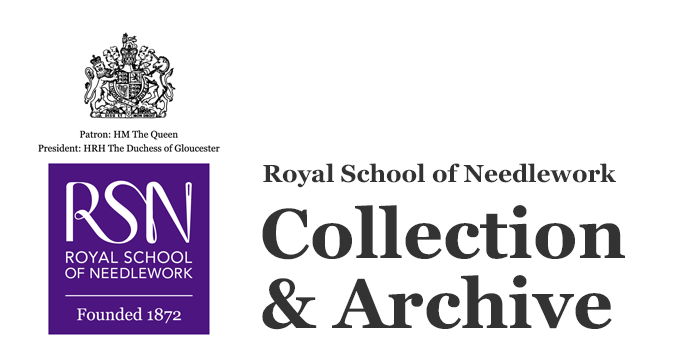Waistcoat
Object name
Worn
Date made
Circa 1745-1750
19th century
19th century
Place made
Description
Circa 1740s men's embroidered waistcoat fronts, likely altered in the 19th century to be worn by a woman.
Content description
Pair of fronts from a brightly coloured floral embroidered waistcoat. This waistcoat was likely embroidered in the 1740s for a man. It was then recut, probably to fit a woman, as it has been shortened, the waist brought in, and the neckline or collar altered. The waistcoat was probably altered in this way in the 19th century, when it was popular to alter historical clothing for fancy dress.
The pocket flap and buttons are missing but the buttonholes made with couched smooth purl are still present on the left front. The waistcoat, which is made of silk satin, is embroidered with carnations, tulips, poppies, peonies, convolvulus, and other flowers, using silk and metal threads worked in satin stitches and long and short stitches. The leaves and stems are bordered by couched down silk gimp. The background is adorned with a network of couched passing threads and gold spangles. The waistcoat fronts are unlined, providing an opportunity to study the reverse of the embroidery.
Family provenance indicates this waistcoat, as well as a matching boy's waistcoat and roughly contemporary men's cuffs (COL.2022.63.a-b), both also in the RSN collection, are all tied to the Osborn(e) family. It is likely that this waistcoat was originally worn by Sir Danvers Osborn, 3rd Baronet (1715-1753). Osborn was part of the Osborn family whose seat was at Chicksands Priory in Bedfordshire. During the Jacobite rising of 1745, Sir Osborn raised and commanded troops in support of King George II. He served as an MP for Bedfordshire from 1747 to 1753. The baronet suffered depression following the death of his wife Mary and abandoned his seat in parliament to become Royal Governor of New York, hoping for a fresh start in 1753. However, instability in New York caused the third baronet even greater anxiety, and he ended his life. He was buried in Holy Trinity Church in New York less than six days after arrival there and his body was brought back to England in 1754.
This waistcoat can be dated to between approximately 1745 and 1750 due to the small size of the matching boy's waistcoat. It was very likely worn by his first son, George, who was born in 1742 or his second son, John, who was born in 1743. Sir Osborn became a widower in 1743 and never remarried.
The pocket flap and buttons are missing but the buttonholes made with couched smooth purl are still present on the left front. The waistcoat, which is made of silk satin, is embroidered with carnations, tulips, poppies, peonies, convolvulus, and other flowers, using silk and metal threads worked in satin stitches and long and short stitches. The leaves and stems are bordered by couched down silk gimp. The background is adorned with a network of couched passing threads and gold spangles. The waistcoat fronts are unlined, providing an opportunity to study the reverse of the embroidery.
Family provenance indicates this waistcoat, as well as a matching boy's waistcoat and roughly contemporary men's cuffs (COL.2022.63.a-b), both also in the RSN collection, are all tied to the Osborn(e) family. It is likely that this waistcoat was originally worn by Sir Danvers Osborn, 3rd Baronet (1715-1753). Osborn was part of the Osborn family whose seat was at Chicksands Priory in Bedfordshire. During the Jacobite rising of 1745, Sir Osborn raised and commanded troops in support of King George II. He served as an MP for Bedfordshire from 1747 to 1753. The baronet suffered depression following the death of his wife Mary and abandoned his seat in parliament to become Royal Governor of New York, hoping for a fresh start in 1753. However, instability in New York caused the third baronet even greater anxiety, and he ended his life. He was buried in Holy Trinity Church in New York less than six days after arrival there and his body was brought back to England in 1754.
This waistcoat can be dated to between approximately 1745 and 1750 due to the small size of the matching boy's waistcoat. It was very likely worn by his first son, George, who was born in 1742 or his second son, John, who was born in 1743. Sir Osborn became a widower in 1743 and never remarried.
Dimensions
width: 30cm
length: 55cm
width: 30cm
length: 55cm
length: 55cm
width: 30cm
length: 55cm
Materials
Stitches
Techniques
Motifs
Credit line
Gift of Sarah Saunders-Davies, 2022.
Catalogue number
COL.2022.39.a-b
Other numbers
RSN 2683a-b
© Royal School of Needlework

